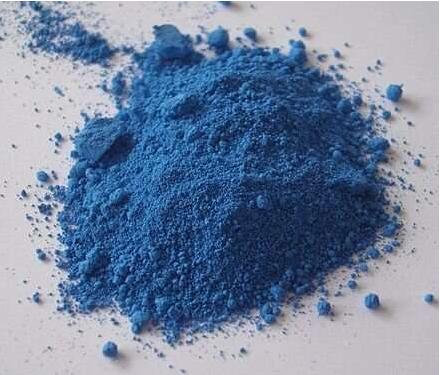博文
是什么让钴元素成为生命的必需品?
 精选
精选
||
是什么让钴元素成为生命的必需品?
诸平
据物理学家组织网(Phys.org)2022年1月26日报道,是什么让钴元素成为生命的必需品(What makes cobalt essential to life? )?
钴位于维生素B12和我们从中获得的重要钴胺素(cobalamins)的柯啉环(corrin ring)的中心。也许令人惊讶的是,我们体内只有两种酶会费心使用这些痛苦构建和精心疏导的辅因子(cofactors)。为什么我们的细胞要花费如此大的力气来获得一点点钴的魔力?是什么催化特性使它如此特别?
其他不常见的基本金属,如钼(Mo)、硒(Se)和碘(I),也同样只在细胞中少量使用,但我们仍能完全合成这些元素的所有有用衍生物。为了驯服钼,我们构建了一种复杂的钼喋呤辅助因子(molybdopterin cofactor),而为了控制碘,我们则组装甲状腺素(thyroxine)。为了将硒吸收到少数需要硒的硒蛋白(selenoproteins)中,精密的SECIS机制重组mRNA代码以吸引一个独特的tRNA,在tRNA上,它的半胱氨酸(cysteine)货物被转化为硒半胱氨酸(selenocysteine)。在每一种情况下,研究人员都了解这些金属的特殊性质,这使得它们不可或缺。
例如,与硫相比,硒是一个更好的亲核试剂(nucleophile),将与活性氧反应更快,但它缺乏π键特性意味着它也更容易被还原。像谷胱甘肽过氧化物酶(GPX4,glutathione peroxidase)这样的硒蛋白相应地更能抵抗过度氧化和不可逆失活。同样,钼是一种能在+4/+5和+5/+6氧化还原电对之间穿梭的双电子氧化还原化合物,它的不可避免的需求反映了几个不太常见的技能。它可以进行各种各样的和能量挑战性的氧化还原反应;在低氧化还原电位下,它可以作为电子阱或电子源;并且(连同更稀有的钨)可以在低电位下发生的反应中,有效地转移氧原子和硫原子。
非凡的地球化学家、意大利都林大学(University of Turin/ Università degli Studi di Torino)的迈克尔•拉塞尔(Michael J. Russell)2022年1月18日在《美国国家科学院院刊》(Proceedings of the National Academy of Sciences简称PNAS)发表的一篇评论文章—— Michael J. Russell. Cobalt: A must-have element for life and livelihood. Proceedings of the National Academy of Sciences, January 18, 2022, 119(3): e2121307119. DOI: 10.1073/pnas.2121307119. https://www.pnas.org/content/119/3/e2121307119.文章中提出了一项值得注意的尝试,即推测钴的基本特性。在元素周期表中处于的Fe和Ni之间,迈克尔•拉塞尔指出:“这种元素的能量密度特别高,外层轨道上有成对的电子。它作为一种金属合金出现在蛇纹石(serpentinites)中,具有从Co+到Co4+的可变价态,它的各种自旋状态和其对比鲜明的构象使其独特,对电子学、催化和生命的出现作出了不可数的贡献。事实上,Co-Fe合作刚刚在氧化还原光谱的另一端——O2演化反应的电催化——进行了研究。Co的替代要么是不可行的,比如在新陈代谢和某些双原子催化中,要么是在遥远的未来。”
迈克尔•拉塞尔的评论是对何等人(He et al)早些时候的一篇文章的回应,该文章证明,通过使用铁和钴金属,可以通过水热法将碳酸氢盐还原成长链碳氢化合物(≤24个碳)。这些发现可能解释了石油的非生物起源和生命出现的关键事件。既然对生命至关重要的卟啉类(porphyrins)和柯啉类(corrins)的残余物可以在石油沉积物中找到,一个关键的问题就变成了:是生命发明了这些分子,还是他们首先使用这些分子的非生物复制品,只是后来才进化出相应的能力来为自己合成它们?
迈克尔•拉塞尔对我的问题的回答是,在他看来,生命很可能通过四氨基酸-肽(four-amino-acid-peptide)甘氨酸-甘氨酸-组氨酸基序(glycine-glycine-histidine motif),能够捕获钴原子,从而发明了类似科啉的配位(corrin-like coordination)。奇怪的是,在中心容纳铁或铜的卟啉类化合物和与镁有同样作用的二氢卟吩类(chlorins)必须收缩成柯啉类来结合钴。这种特异性似乎是尽管接近相同的原子半径(约125 pm)为连续的Fe, Co, Ni, Cu元素序列。在迈克尔•拉塞尔看来,生命出现时所需要的钴(和其他过渡金属)活跃在碱性热液喷口的孔雀石绿锈沉积物(deposits of the mineral green rus),也被称为铁榴石(fougerite)中。钴类咕啉(corrinoid)与铁硫簇结合形成了原始乙酰辅酶A(acetyl coenzyme-A)的核心,这是位于我们进化树底部的产乙酰菌(acetogens)和产甲烷菌(methanogens)的途径。这种Co(FeS)蛋白介导甲基与一氧化碳或其他参与乙酰辅酶A生物合成的实体的连接或分离。
线粒体中甲基丙二酰辅酶A突变酶(methylmalonyl-CoA mutase)用于脂肪酸和氨基酸分解的维生素B12被称为腺苷钴胺素(adenosylcobalamin简称AdoCbl)。另一种钴胺利用酶(cobalamin-utilizing enzyme),蛋氨酸合成酶(methionine synthase),在胞质中起作用并使用甲基钴胺辅助因子(methylcobalamin cofactor),其中腺苷基被甲基取代。陆地植物和真菌既不合成也不需要钴胺素(cobalamin),因为它们缺乏甲基丙二酰辅酶A突变酶,而且有不同种类的蛋氨酸合成酶,不需要B12。当这些酶不能正常工作时,它们的前体分子可能会积累到高水平,导致脱髓鞘疾病(demyelinating disease)和恶性贫血(pernicious anemia)等问题。
虽然钴的热稳定性和高能量密度使其成为锂电池阴极的理想元件,但它的用途来自于它其他许多独特的特性,有些特性已被发现,有些特性还有待发现。
上述介绍,仅供参考。欲了解更多信息,敬请注意浏览原文或者相关报道。
Magnetism at the root of enhanced 'green' catalysis
Cobalt is in the news—demanded by life’s metabolisms and seemingly irreplaceable in our technological world, yet the element averages only 25 ppm in Earth’s crust. So, impending deficiency for both life and technology is always looming. For humans and other animals, cobalt is the active center of vitamin B12 involved in methyl, and other, biochemistries. Although it is toxic in excess, we need ~40 ng of Co daily, while other animals need their proportionate share, as do many microbes. In vitamin B12, the variable valence metal is coordinated within a corrin ring by four nitrogen ligands. The same Co-bearing core, although attached to iron sulfide, is central also to life’s acetyl coenzyme-A pathway (1). Indeed, Co had, and has, a vital part to play in the emergence and evolution of both the animate and the technological systems. Right down at the bottom of our evolutionary tree, the acetogens and the methanogens require such Co corrinoid iron sulfide enzymes for methyl biochemistry (2). This would be impossible without this Co(FeS) protein needed to mediate the attachment or detachment of a methyl group to or from carbon monoxide or another entity involved in the biosynthesis of acetyl-CoA (1, 2). In industry, cobalt is best known today as an obligatory constituent of batteries and smartphones as well as wear-resistant tools, whereas it was already playing a central role in the chemical industry as the “cobalt blue” of paints and pigments in the 19th century and as a catalyst in the 20th century.
In PNAS, He et al. (3) revisit cobalt’s catalytic propensities as they explore the hydrothermal synthesis of long-chain hydrocarbons from sodium bicarbonate as substrate. Previous geochemical experiments on hydrothermal syntheses of hydrocarbons involved the hydrogenation of CO as in the Fischer–Tropsch reaction—a reaction assumed to operate during exothermic serpentinization reactions produced by waters convecting within ultramafic (Mg > Fe silicate) rocks (1, 3, 4). Past work on the geochemical reduction of CO2 to long-chained hydrocarbons using F–T syntheses apparently generated polymers ranging from C2 to >C35 from aqueous solutions of formic acid in stainless steel vessels at 175 ℃ (4). However, these previous attempts to synthesize the abiotic generation of methane and the higher hydrocarbons have been called into question due to a variety of possible contaminants, from steel autoclaves, to the use of rubber bungs, to the use of methane-sorbed rocks employed in various attempts at reducing CO2 entrained in serpentinizing solutions (5).
https://blog.sciencenet.cn/blog-212210-1323468.html
上一篇:超薄材料可能为个人尺寸的量子设备铺平道路
下一篇:纳米结构材料将光反向折射,这是创造光子电路的重要一步
